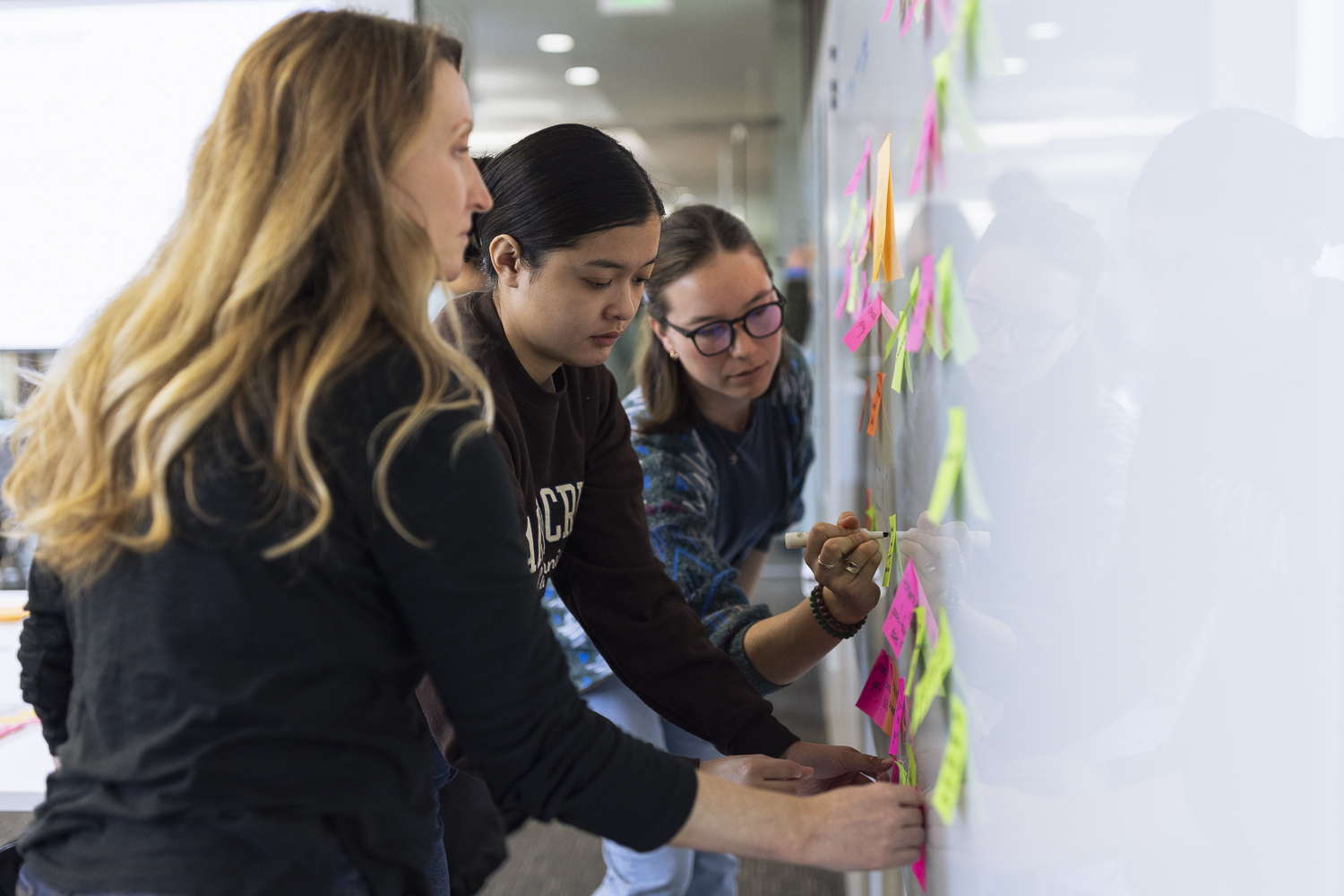A country of 17,000 islands is at the forefront of a global effort to sustainably feed billions of people in the coming decades. Because it is rich in blue foods – fish, shellfish, seaweed, and aquatic plants – Indonesia is well positioned to pioneer a model for other countries to tap the ocean’s vast potential while conserving it. In collaboration with the Indonesian government, civil society, organizations, and businesses, Stanford University researchers are co-designing approaches to capitalize on sustainably produced blue foods to improve nutrition, food security, and livelihoods for the country’s 280 million people.
The “Blue Food Transformations in Indonesia” project identifies regions and populations that can most benefit from greater blue food consumption and where access to such foods will need to increase to meet those goals. The effort grew out of a 2023 collaboration between the Stanford Doerr School of Sustainability and Indonesia’s Ministry of National Development Planning to integrate blue foods into the country’s national development strategy and economic strategy. It also builds on research generated by the Blue Food Assessment, a global effort by more than 100 scientists that filled knowledge gaps related to the role of blue foods in global food systems.
“Clearly, we can’t provide healthy, sustainable diets to a world of 10 or 11 billion people if we continue to produce food the way we do today,” said Jim Leape, project co-principal investigator and co-director of the Stanford Center for Ocean Solutions. “Indonesia is by any measure one of the most important blue food nations on Earth. It could show us how better stewardship and use of these resources can help build a more sustainable and equitable future.”
Strategic stewardship of a critical resource
Agricultural production is the largest source of pressure on the world’s natural resources, consuming 40% of land; driving deforestation, biodiversity loss, and water scarcity; and accounting for up to 30% of greenhouse gas emissions fueling climate change. The Blue Food Assessment showed that many blue food species can be produced with lower carbon footprints than terrestrial animal foods, often with higher nutritional gains.
To guide Indonesia’s implementation of sustainable blue foods strategies, researchers created datasets highlighting the nutritional opportunities in the aquatic food sources produced in each district across the country. These analyses can help the government create transformative policies that prioritize blue foods, which are often the most affordable and accessible sources of nutrients critical for healthy development. As a next step, the research team hopes that assessment findings could be used in national free meal programs to address childhood stunting, which affects 1 in 5 children across Indonesia and as many as 1 in 3 in some regions.
Such regional analyses can also reveal the livelihood opportunities in each place, as well as trade-offs and opportunities in decisions like how to manage fisheries, what aquaculture to expand, and how much to export versus keeping for domestic needs. The research team uses Indonesian production, consumption, trade, and ecological data to quantify where patterns may need to shift to make blue foods more available for domestic needs or where coastal management needs to be strengthened to better support local consumption. In parallel, the researchers analyze local and national policies to understand how they support or undermine blue food equity and sustainability.
The human angle
For the collaboration to succeed, environmental issues must be considered through a human rights lens, according to David Cohen, project co-principal investigator and co-director of the Stanford Center for Human Rights and International Justice and the Southeast Asia Program in the Walter H. Shorenstein Asia Pacific Research Center at the Freeman Spogli Institute for International Studies.
“You’re not going to produce blue foods when there’s no fish left to catch in the waters of your community because mangroves have been cleared for development, coral reefs destroyed, fish catches reduced,” said Cohen, who is also a professor of environmental social sciences in the Doerr School of Sustainability and of classics in the Stanford School of Humanities and Sciences. “What you’re going to see is a displacement of populations, which is going on already in some places. That’s a humanitarian crisis central to the human rights work we do.”
Cohen emphasized the need for a holistic approach that addresses both the needs of the communities as well as the preservation of the environment on which their health and livelihoods depend. This requires governments at the national and local levels to balance the short-term goals of national economic growth with the long-term integration of sustainable development and social justice.
Before collaborating on this project, Cohen and Leape had each worked in Indonesia on a range of human rights and sustainability initiatives for more than 20 years. Their current project builds on previous partnerships between Stanford centers and Indonesian institutions, including the country’s supreme court, national human rights commission, and local nongovernmental organizations, on issues ranging from worker exploitation in the tuna industry to improving the capacity of judges, prosecutors, human rights defenders, and civil society advocates.
“The starting point for our work is the willingness of Indonesia’s governmental agencies to engage in genuine partnerships in ways that will have a long-term impact,” Cohen said.
For more information
Leape is also the William and Eva Price Senior Fellow at the Stanford Woods Institute for the Environment and professor, by courtesy, of oceans, in the Stanford Doerr School of Sustainability. Cohen is also the WSD-HANDA Professor in Human Rights and International Justice.
The “Blue Food Transformations in Indonesia” project is funded by the Stanford Woods Institute for the Environment’s Realizing Environmental Innovation Program.
